I am a cute Animals lover. I love animals and I am addicted on cute animals.
Don't wanna be here? Send us removal request.
Text
Prevent Outdoor Pet Hazards
1# Give Your Pal Shelter From the Weather

Winter calls for extra insulation in dog houses and other outdoor animal shelters. To keep your pet cozy, make a raised bed using a fluffy cushion or blanket. You can also make a bed of dry hay or cedar shavings, but change them often if you do. Check and refresh water bowls often to make sure they don’t freeze over.
2# Stave Off Sunburn

The dog days of summer pose danger for our faithful friends. Short-haired, close-shaven, and light-colored pets are prone to sunburns. The tender skin of snouts, noses, ears, and tails is also exposed to the UV rays. Rub on doggie sunblock (at least SPF 15 in strength) about 15 minutes before a long stretch in the sun. Make sure your pet has a shady spot to hang out, too.
3# Keep Hot Dogs Cool

Heat can be hazardous to your pet’s health. Be sure they have plenty of water. Choose outside bowls that won’t tip, and fill them often. On walks, bring a water bowl and spray bottle for cooling drinks and showers along the way. Never leave pets alone in a vehicle during summer. Temperatures can climb above 100 degrees in a matter of moments.
4# Know the Symptoms of Heatstroke

Humans cool down when we sweat. Dogs chill when they pant. But if your pet can’t stop panting, has labored breathing, their gums turn white or blue, or they become lethargic, get to a vet right away. These are warning signs of heatstroke, which can cause serious illness or even death.
5# Skip the Chocolate Mulch

One kind of bark has a mean bite. Mulch made from the hulls of cocoa beans smells like chocolate, which attracts animals. Like real chocolate, it’s bad for your pooch. Soak the mulch, or wait for a heavy rain to wash away the tempting aroma. You could also pick less-flavorful products like pine straw or cypress nuggets instead.
6# Patrol the Pool and Pond

Wading pools can offer relief from the heat, but deeper waters are danger zones. Whether beachside or poolside, train your dog to climb to dry land. Never leave them alone in the water. Make sure pool covers are tightly in place to prevent drowning. Salt and chlorine aren’t good for your dog’s fur, skin, eyes, nose, or stomach, so don’t let them drink the water, either. After a swim, give them a good rinse. Talk to your vet about products that clean ears and dry them out after a swim.
7# Ditch the Dumpster Diving

Stinky compost and trash piles smell great to your dog. But they’re also filled with rotting food, bacteria, parasites, and germs that are bad for them. Items in the recycling bin have sharp edges that can damage snouts, paws, tongues, and tummies. Choose waste containers with tight-fitting tops. Place tin and broken glass inside cans, and then crush or crimp the rims shut. Keep dogs in your gaze as they graze.
8# Steer Clear of Puddles

Train your pooch to be a puddle jumper, or at least steer them around them. Standing water is a perfect place for bacteria and parasites to breed. If your pet swallows them when they take a drink, they could get seriously ill. Puddles can also contain antifreeze -- which is deadly if animals drink it -- or runoff full of icky chemicals.
9# Control the Critters

Whether it’s a collar, a pill, or a medication you put on their skin, it's important to keep your pet flea- and tick-free. These bugs feast on their blood -- and yours. Plus they carry nasty ailments like Lyme disease and Rocky Mountain spotted fever. Talk to your vet about the best choice. If you live in a place where ticks thrive, check your pet after every trip outside. If they have fleas, chances are they’re in your house and yard, too. The vet can tell you how to treat them.
10# Get the Pests, Not Your Pets

Pest control requires pet patrol. Some products, including many that tackle fleas and ticks, won’t hurt your pal. But most poisons used to kill rats, moles, gophers, slugs, and snails are strong enough to harm your dog. Buy pet-proof bait traps, and stand guard as needed to keep your dog from digging up buried poisons. Store them out of your pet’s reach.
11# Pick Pet-Safe Products

The things that make your yard and garden healthy, like fertilizers and weed killers, can make your four-legged friend sick. Look for non-toxic options and use them as directed. Make sure spray-on chemicals have dried before you let your dog roam the yard. Keep bags and bottles tightly sealed where they can’t get to them.
12# Fight Flying Foes

You’ll hear a yelp or yowl if your dog is attacked by a bee, yellow jacket, wasp, or hornet. Caulk cracks around windows, doors, and attics, and watch out for burrows where these insects build nests. Long-range aerosol sprays can get rid of unwanted pests. If your dog gets stung, scrape out the stinger. Apply a paste of baking soda and water, then ice the area. An OTC antihistamine, in the right dose for their weight, may also be needed (call your vet for the right amount). But go straight to the vet if they have trouble breathing or lots of swelling.
13# Provide a Winter Wardrobe

Furry friends need more than their own coats to keep warm in winter. Ideally, pets should stay indoors, going outside only for exercise and potty breaks. For outings, dress them in sweaters or coats when temps fall below freezing. Add booties to their wardrobe to protect paws from snow and ice, which can cause frostbite, or salt, which can cause burns. Dampen a towel with warm water to wipe down your dog's paws when they come in from the cold.
6 notes
·
View notes
Text
Some Skin Problems in Dogs

Dog Skin Problems
The sound of a dog constantly scratching or licking can be as irritating as nails on a chalkboard. But don’t blame your pooch for these bad habits -- a skin condition is probably the culprit. Possible causes range from parasites to allergies to underlying illness. WebMD has compiled images of some of the most common canine skin problems.
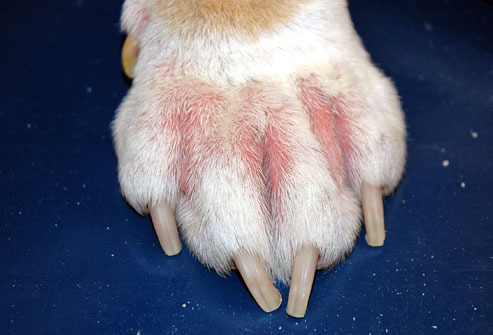
Allergic Dermatitis
Dogs can have allergic reactions to grooming products, food, and environmental irritants, such as pollen or insect bites. A dog with allergies may scratch relentlessly, and a peek at the skin often reveals an ugly rash. Corticosteroids or other, newer medicines can help with itchy rashes. But the most effective treatment is to identify and avoid exposure to the allergens.
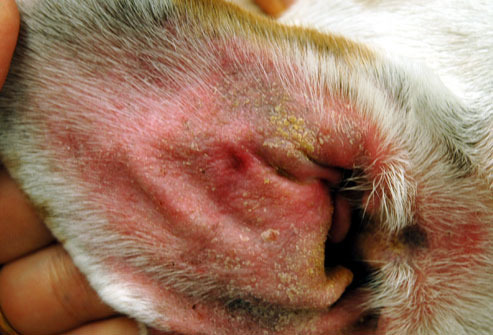
Yeast Infection
If your dog can't seem to stop scratching an ear or licking and chewing their toes, ask your veterinarian to check for a yeast infection. Symptoms include irritated, itchy, or discolored skin. The infection usually strikes the paws or ears, where yeast have a cozy space to grow. Yeast infections are easy to diagnose and often respond well to a topical cream. In some cases, your veterinarian may prescribe oral drugs or medicated baths.
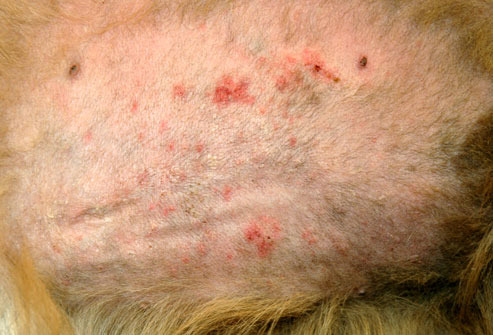
Folliculitis
Superficial bacterial folliculitis is an infection that causes sores, bumps, and scabs on the skin. These skin abnormalities are easier to see in shorthaired dogs. In longhaired dogs, the most obvious symptoms may be a dull coat and shedding with scaly skin underneath. Folliculitis often occurs in conjunction with other skin problems, such as mange, allergies, or injury. Treatment may include oral antibiotics and antibacterial ointments or shampoos.
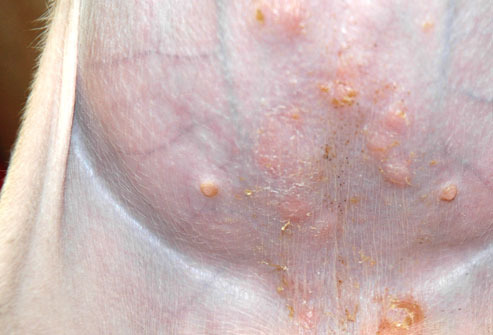
Impetigo
Another type of bacterial infection, impetigo is most common in puppies. It causes pus-filled blisters that may break and crust over. The blisters usually develop on the hairless portion of the abdomen. Impetigo is rarely serious and can be treated with a topical solution. In a small number of cases, the infection may spread or persist.
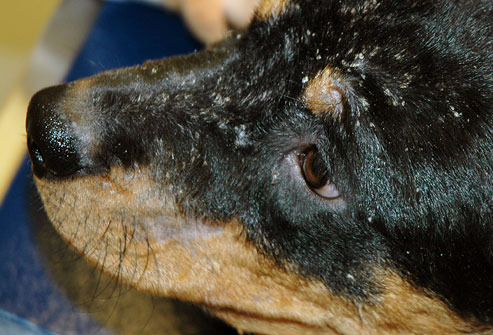
Seborrhea
Seborrhea causes a dog's skin to become greasy and develop scales (dandruff). In some cases, it's a genetic disease that begins when a dog is young and lasts a lifetime. But most dogs with seborrhea develop the scaling as a complication of another medical problem, such as allergies or hormonal abnormalities. In these cases, it is vital to treat the underlying cause so symptoms do not recur. The seborrhea itself typically can be treated with certain medicated shampoos.
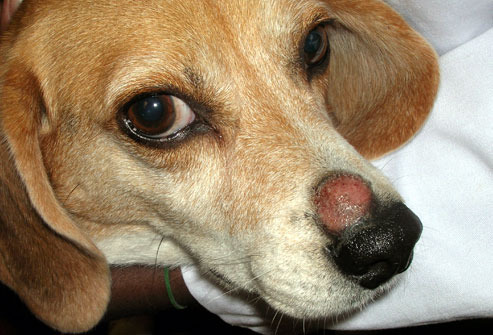
Ringworm
Despite its name, ringworm is not caused by a worm, but by a fungus. The term "ring" comes from the circular patches that can form anywhere, but are often found on a dog's head, paws, ears, and forelegs. Inflammation, scaly patches, and hair loss often surround the lesions. Puppies less than a year old are the most susceptible, and the infection can spread quickly between dogs in a kennel or to pet owners at home. Various anti-fungal treatments are available.
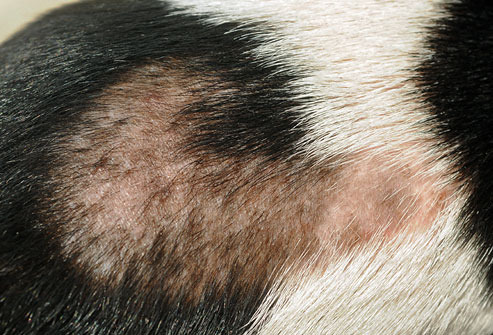
Shedding and Hair Loss (Alopecia)
Anyone who shares their home with dogs knows that they shed. How much shedding is normal depends on breed, time of year, and environment. But sometimes stress, poor nutrition, or illness can cause a dog to lose more hair than usual. If abnormal or excessive shedding persists for more than a week, or you notice patches of missing fur, check with your veterinarian.
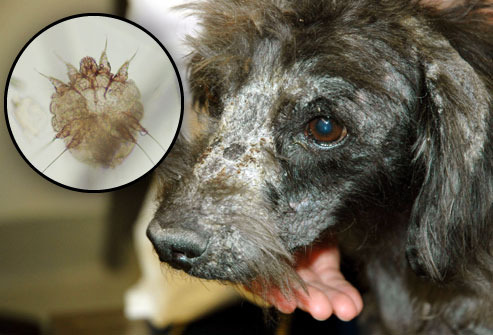
Mange (Mites)
Mange is a skin disorder caused by tiny parasites called mites. Sarcoptic mange, also known as canine scabies, spreads easily among dogs and can also be transmitted to people, but the parasites don't survive on humans. The symptoms are intense itching, red skin, sores, and hair loss. A dog's ears, face and legs are most commonly affected. Demodectic mange can cause bald spots, scabbing, and sores, but it is not contagious between animals or people. Treatment depends on the type of mange.
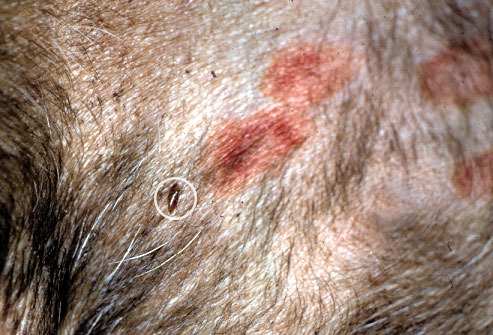
Fleas
Fleas are the bane of any pet owner. You may not see the tiny insects themselves, but flea droppings or eggs are usually visible in a dog's coat. Other symptoms include excessive licking or scratching, scabs, and hot spots. Severe flea infestations can cause blood loss and anemia, and even expose your dog to other parasites, such as tapeworms. Treatment may include a topical and/or oral flea killer and a thorough cleaning of the pet's home and yard.
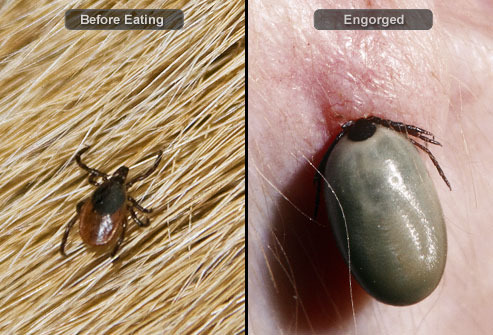
Ticks
Ticks, like fleas, are external parasites that feed on the blood of their hosts. You can spot a tick feeding on your dog with the naked eye. To properly remove a tick, grasp the tick with tweezers close to the dog’s skin, and gently pull it straight out. Twisting or pulling too hard may cause the head to remain lodged in your dog’s skin, which can lead to infection. Place the tick in a jar with some alcohol for a couple of days and dispose of it once it is dead. In addition to causing blood loss and anemia, ticks can transmit Lyme disease and other potentially serious bacterial infections. If you live in an area where ticks are common, talk to your veterinarian about tick control products.
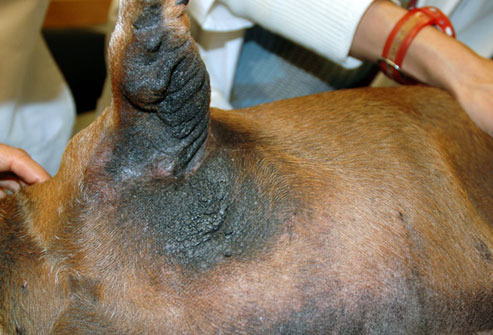
Color or Texture Changes
Changes in a dog's skin color or coat texture can be a warning sign of several common metabolic or hormone problems. They can also result from an infection or other skin disorder. Usually a simple blood test can identify the underlying cause. Be sure to ask your veterinarian about any significant changes to your dog’s coat.
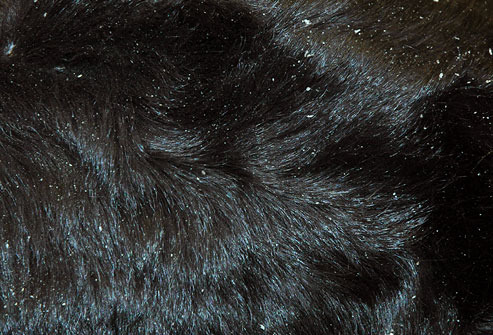
Dry, Flaky Skin
Dry, flaky skin can be a red flag for a number of problems. It's a common symptom of allergies, mange, and other skin diseases. But most often, dry or flaky skin is nothing serious. Make sure you are feeding Fido high quality food. Like people, some dogs simply get dry skin in the winter. If this seems to cause your pet discomfort, consult your veterinarian. Ask whether a fatty acid supplement or a humidifier might help.
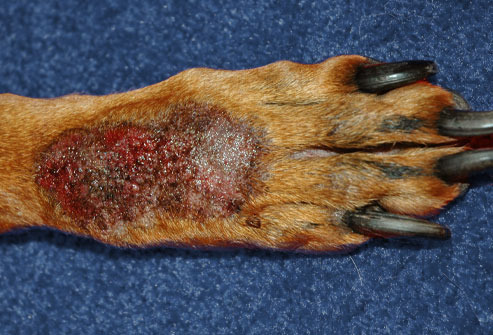
Acral Lick Granuloma
Also called acral lick dermatitis, this is a frustrating skin condition caused by compulsive, relentless licking of a single area -- most often on the front of the lower leg. The area is unable to heal, and the resulting pain and itching can lead the dog to keep licking the same spot. Treatment includes discouraging the dog from licking, either by using a bad-tasting topical solution or an Elizabethan collar. Also ask your dog's vet whether a medication like a topical or corticosteroid might help.
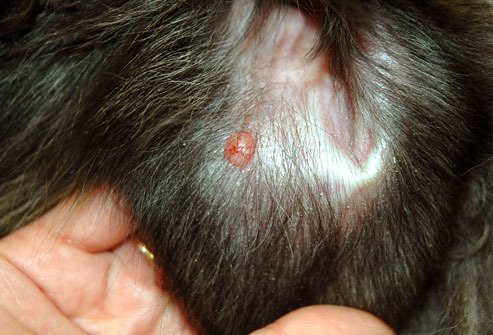
Skin Tumors
If you notice a hard lump on your dog's skin, point it out to your vet as soon as possible. Dogs can develop cancerous tumors in their skin. The only way to confirm a diagnosis of cancer is to biopsy the tumor. If the lump is small enough, your veterinarian may recommend removing it entirely. This can yield a diagnosis and treatment with a single procedure. For tumors that have not spread, this may be the only treatment needed.
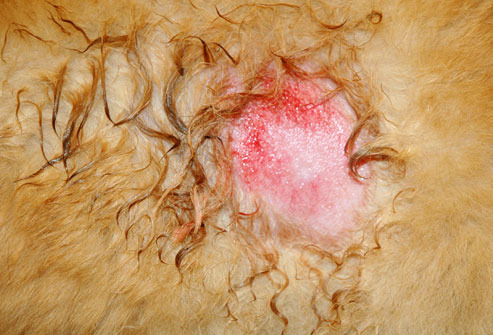
Hot Spots
Hot spots, also called acute moist dermatitis, are small areas that appear red, irritated, and inflamed. They are most commonly found on a dog's head, hips, or chest, and often feel hot to the touch. Hot spots can result from a wide range of conditions, including infections, allergies, insect bites, or excessive licking and chewing. Treatment consists of cleansing the hot spot and addressing the underlying condition.
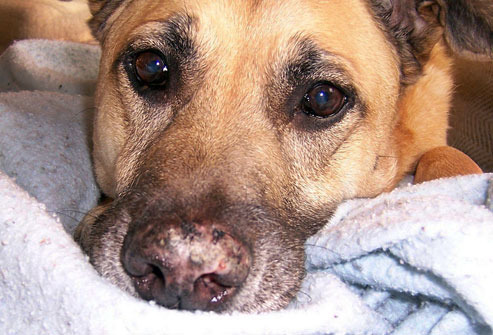
Immune Disorders
In rare cases, skin lesions or infections that won’t heal can indicate an immune disorder in your dog. One of the best known is lupus, a disease that affects dogs and people. Lupus is an autoimmune disorder, meaning the body’s immune system attacks its own cells. Symptoms include skin abnormalities and kidney problems. It can be fatal if untreated.
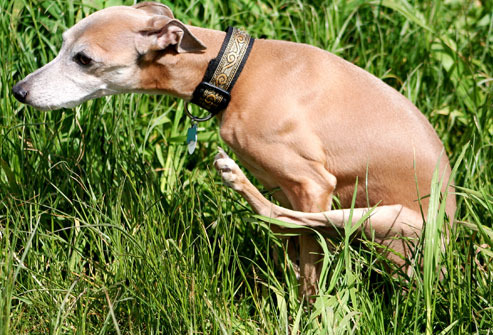
Anal Sac Disease
As if dog poop weren't smelly enough, dogs release a foul-smelling substance when they do their business. The substance comes from small anal sacs, which can become impacted if they don't empty properly. The hallmark of impacted anal sacs is a dog scooting their bottom along the ground. Other symptoms include biting or licking the anal area. A vet can manually express full anal sacs, but in severe cases, the sacs may be surgically removed.
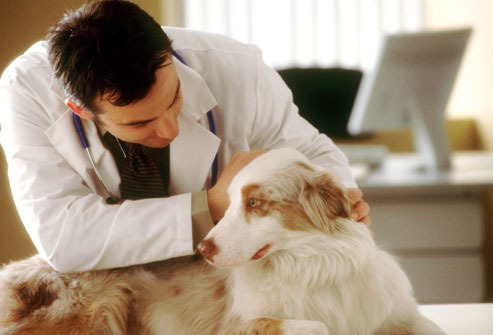
When to See the Vet
Although most skin problems are not emergencies, it is important to get an accurate diagnosis so the condition can be treated. See your veterinarian if your dog is scratching or licking excessively, or if you notice any changes in your pet's coat or skin, including scaling, redness, discoloration, or bald patches. Once the cause is identified, most skin problems respond well to treatment.
1 note
·
View note
Text
Tips to Keep Your Dog Healthy and Safe

Dog-Proof Your Home
Check that your home is safe for your pet -- ideally before you bring them home. For instance, secure any electrical cords they might chew on, keep toilet lids closed, and make sure they can’t get into any medication or household cleaners. Got a pool in your yard? If your pup can’t or hasn’t learned how to swim, think about getting a pool fence or a motion detector system that will go off if they fall into the water. Also, double-check that your pet can’t get to any human food, some of which is toxic for dogs. If they are especially curious, you might want to use child-proof latches to secure cabinets and trash cans.
Get on a Vaccination Schedule
Just like for people, vaccines are one of the surest ways to protect your pup’s health. They prevent serious, highly contagious diseases like parvo, distemper, and rabies, which can be fatal. The schedule and shots they need will vary, based on their health issues and where you live, so talk to your vet about what to get. In general, most puppies should get their first set of shots around 6 weeks, and then every 3 weeks until they are 16 weeks old. Adult dogs need to be revaccinated every 1 to 3 years.
Choose the Right Food
Your dog’s age, weight, health, and activity level matter when it comes to what they eat. In general, make sure the food you choose has a statement from the Association of American Feed Control Officials on the label. That means it’s nutritionally “complete and balanced.” Beware of feeding your dog bones, raw meat, or raw eggs. The American Veterinary Medical Association, the CDC, and other groups warn that raw foods can lead to serious health problems for animals, like infection with E. coli and other harmful bacteria. Bones can tear a dog’s stomach or intestines.
4 notes
·
View notes
Photo

Nice German Shepherd
18 notes
·
View notes
Text

His face is in the shade but this pic is so cute!

😊
76 notes
·
View notes
Photo
Nice dogs


Delightful baby
2K notes
·
View notes
Photo
Nice dog
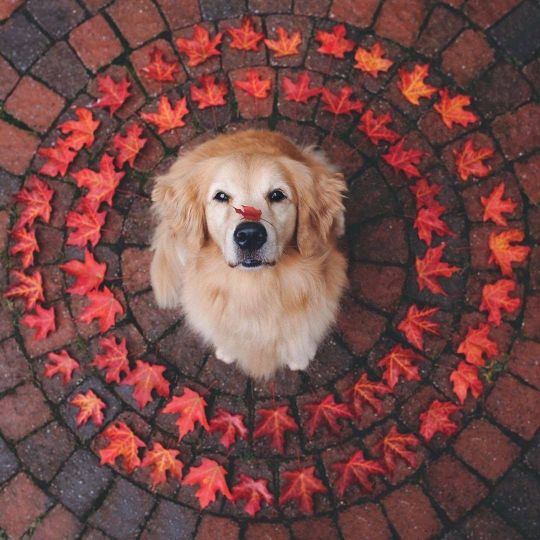


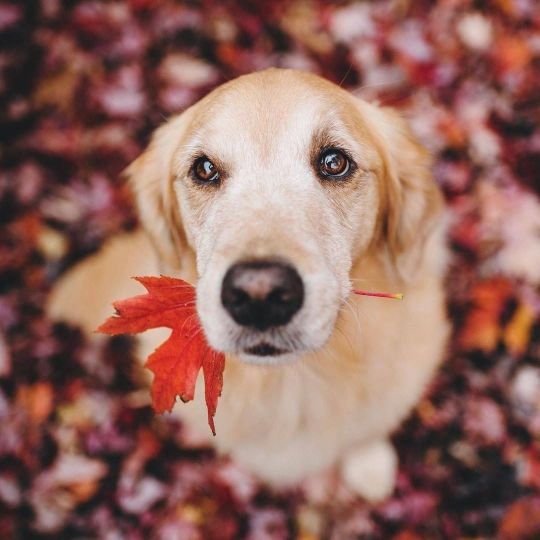
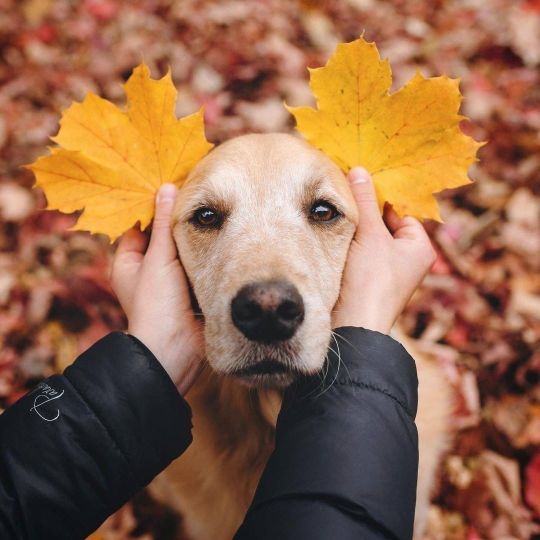

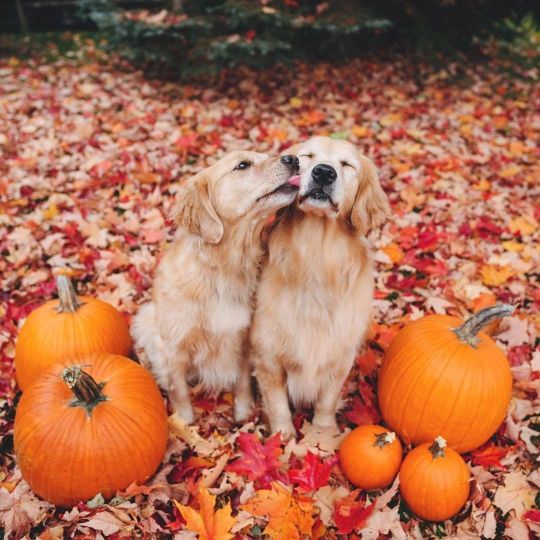

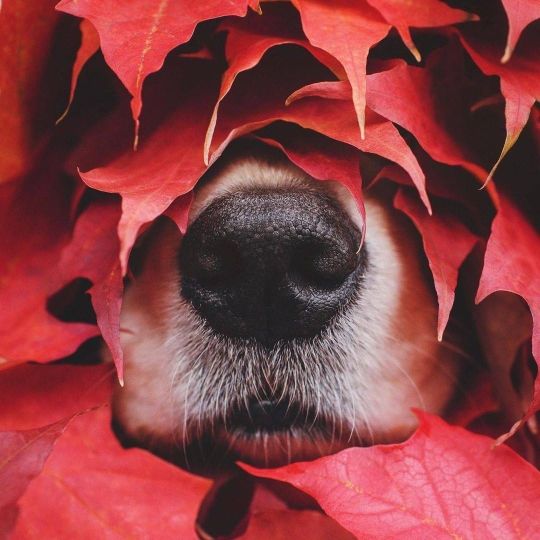
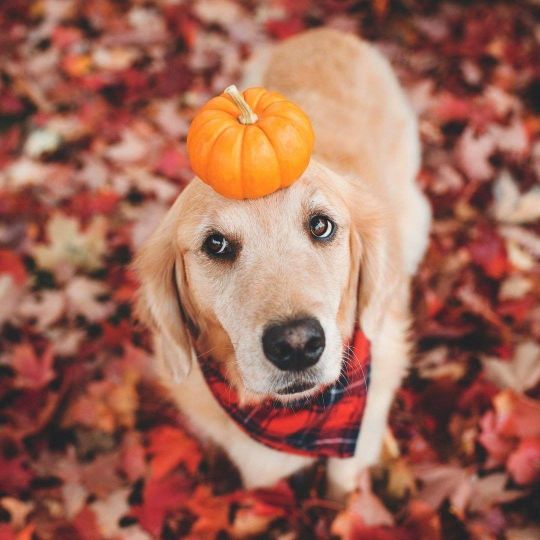
Falling Season by lizzie.bear
20K notes
·
View notes
Video
Nice
tumblr
We live in a basement suite. So I built a loft for our corgi Wolfgang.
(Source)
16K notes
·
View notes
Photo

When I 😍 look into the eyes of an animal I do not see an animal. I see a living being. I see a friend. I feel a soul.
0 notes
Photo

🐕 Waiting for this owner 👨👨👨
2 notes
·
View notes
